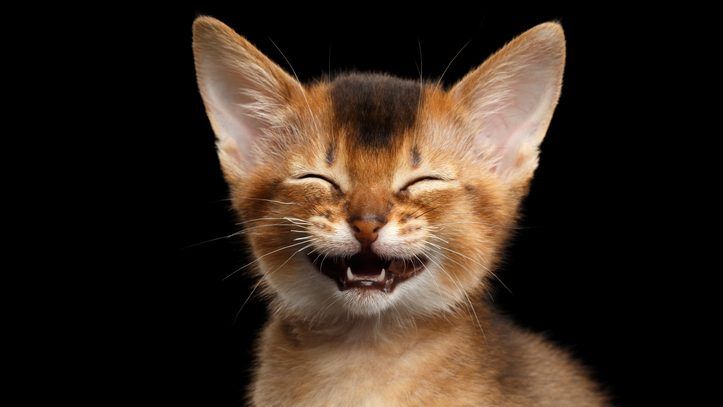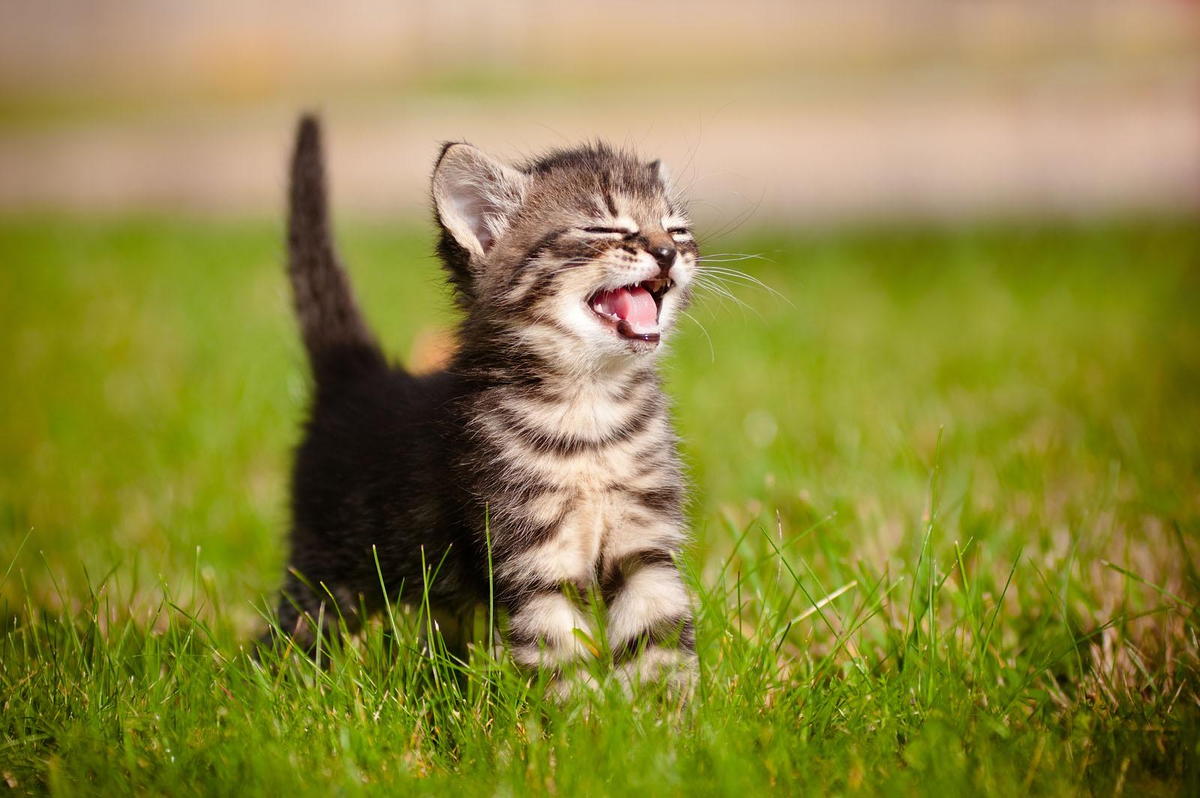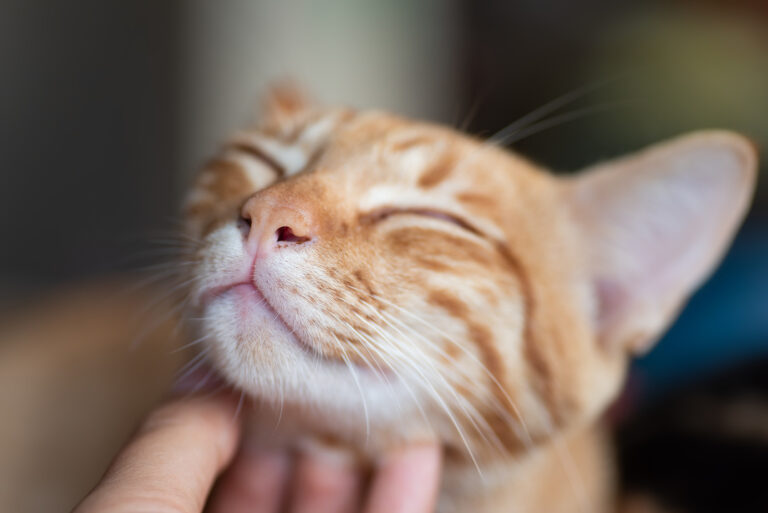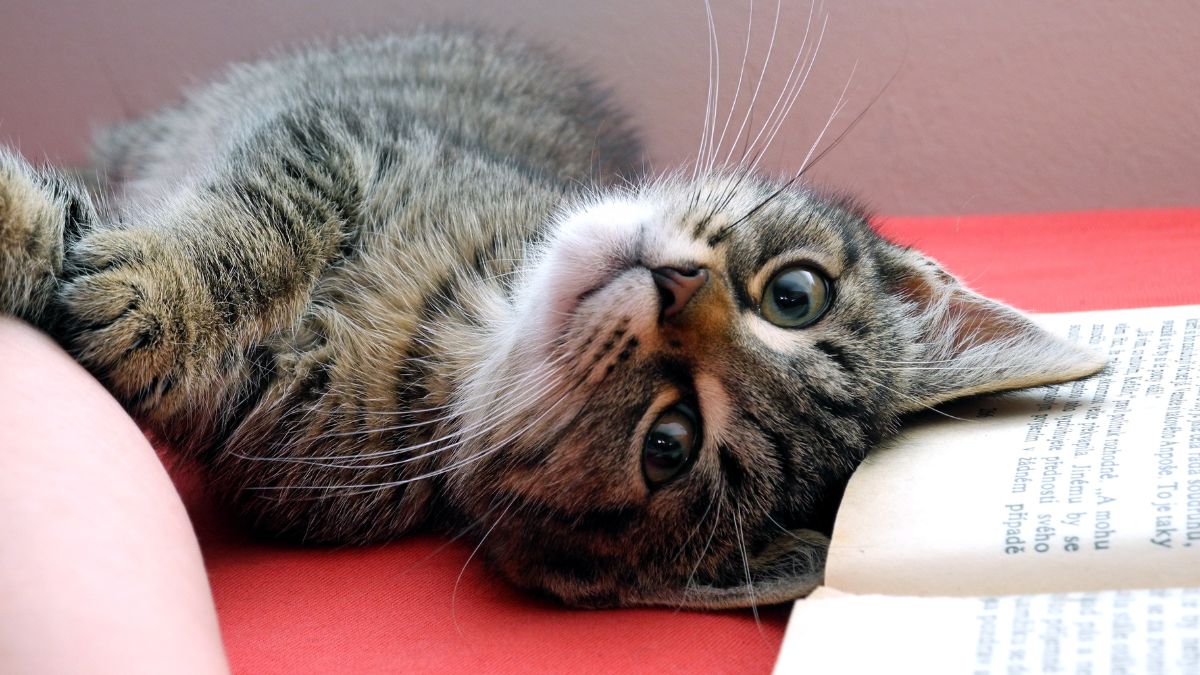Cats happy, happy life.
#Happy cats are a delight to both you and your feline friend. Understanding what brings joy to your cat can greatly enhance your bond and improve their overall well-being. From physical activities and mental stimulation to proper nutrition and a secure environment, there are important factors that contribute to a cat’s happiness. In this blog post, we will explore the key elements that help you create a fulfilling and joyful life for your cherished pet, ensuring every purr and playful moment counts.
Key Takeaways:
- Enrichment Activities: Cats thrive on mental stimulation, so providing toys and interactive activities is necessary for their happiness.
- Safe Environment: A secure and comfortable living space allows cats to explore, relax, and feel safe, which significantly contributes to their well-being.
- Affection and Socialization: Regular interaction, petting, and playtime with their owners foster a strong bond and enhance a cat’s emotional health.
Understanding Feline Behavior

A thorough understanding of feline behavior is crucial to providing a happy and fulfilling life for your cat. By recognizing the nuances of their actions and reactions, you can create a more harmonious environment that caters to their needs. This chapter explores into the significance of body language, vocalizations, and play behavior, all critical components in deciphering what makes your feline friend truly happy.
The Importance of Body Language
Language is an intricate system that cats utilize to communicate their feelings and intentions. Observing your cat’s body language can offer invaluable insight into their mood. For instance, ear positioning, tail movements, and even facial expressions can signal whether your cat is feeling relaxed, threatened, or playful. By paying close attention, you can learn to respond appropriately to your cat’s needs and adjust your interactions accordingly.
Understanding these subtle cues can significantly enhance your relationship with your cat. If you notice that your cat’s body is tense and their ears are flattened, it’s likely they are feeling anxious or defensive. Conversely, a relaxed posture with a gently waving tail indicates that your cat is comfortable and open to social interaction. Recognizing these signs allows you to provide a safe space where your feline companion can thrive.
Vocalizations and Their Meanings
On another level, cats communicate through a variety of vocalizations, each carrying its own meaning. From soft purring to loud yowling, the sounds your cat makes can indicate a range of emotions and needs. For instance, a gentle purring sound often reflects contentment, while an aggressive hiss might mean your cat feels threatened. Listening attentively to your cat’s vocalizations will give you clues about their emotional state, helping you to respond effectively to their needs.
For instance, if your cat suddenly starts meowing loudly, it could signify that they’re seeking your attention, feeling hungry, or want to go outside. Similarly, repeated meows or a specific tone may indicate frustration or a desire for play. By drawing connections between their vocalizations and their circumstances, you can better understand what your cat is trying to convey. This ensures that you are meeting their emotional and physical needs, fostering a deeper bond between you and your furry friend.
Recognizing Play Behavior
Meanings behind play behavior can provide further insights into what makes your cat happy. Play is crucial for a cat’s physical and psychological well-being, serving as an outlet for their natural instincts such as hunting and exploring. When your cat engages in play, watch for signs like pouncing, stalking, and the use of their claws. These actions are more than just whimsical; they’re expressions of your cat’s instincts that help them channel energy in a positive way.

By recognizing what constitutes playful behavior, you can actively engage with your cat in ways that enhance their happiness. Utilizing toys that mimic prey, such as feather wands or laser pointers, can stimulate their hunting instincts while promoting exercise. Furthermore, observing your cat’s preferences can help you tailor your play sessions to what they enjoy most, ensuring that both of you enjoy the time spent together and reinforcing a happy, healthy companionship.
Their inclination to engage in playful behavior showcases the importance of interaction in your cat’s life. Knowing when to introduce new toys or playtime can significantly contribute to their overall happiness. By fostering an environment rich in play, you are not only respecting their natural instincts but also strengthening the bond between you and your feline friend.
The Role of Environment
Some aspects of your cat’s environment can significantly influence its happiness and overall well-being. Creating an atmosphere that caters to your feline friend’s natural instincts is crucial. When you consider your cat’s habitat, focus on providing safe spaces, vertical spaces, and sensory enrichment. Every element in their environment plays a role in creating a joyful experience, enhancing their ability to feel secure and fulfilled.
Safe Spaces and Hiding Spots
On any given day, your cat may seek out quiet corners and concealed areas to relax and unwind. These safe spaces are vital for helping cats feel secure, as they can retreat to hide from potential stressors in their environment. Whether it’s a cozy blanket in a secluded nook or a box tucked away in a corner, having multiple hiding spots allows your cat to control its surroundings and find solace when needed.

Additionally, placing a few hiding spots around your home encourages your feline friend to exhibit its natural behavior. You may notice how your cat becomes more confident and adventurous when it knows it has a safe place to return. By enhancing your living space with these nooks and crannies, you not only foster happiness but also strengthen your bond with your curious companion.
Vertical Space: Cat Trees and Shelves
For cat owners, it’s beneficial to recognize that cats are climbers by nature. Incorporating vertical space into your home is necessary for providing opportunities for exploration and physical activity. Cat trees, shelves, and wall-mounted perches allow your feline to lounge above ground while keeping an eye on its domain. This elevated environment helps fulfill their instinctual desire to survey their territory, providing both mental stimulation and a sense of safety.
Spaces that include vertical perches not only promote healthy exercise but also enhance your cat’s happiness. By giving your cat the opportunity to leap, stretch, and climb, you ensure that it can maintain its physical health while also elevating its mood. The presence of cat trees or shelves lets your furry friend engage in natural behaviors, leading to a more enriched and fulfilled life.
Enrichment Through Scents and Textures
The environment can also be enriched through various scents and textures that cater to your cat’s sensory preferences. Introducing safe plants, such as catnip or valerian, can stimulate playful behavior, while also providing aromatic enrichment that many felines find irresistible. Varying textures in their surroundings, from soft blankets to scratch posts made of different materials, allows your cat to experience a variety of tactile sensations, contributing to their overall emotional health.
By paying attention to the scents that engage your cat, you can create an inviting environment that fosters happiness. Routine changes, such as rotating toys or introducing new scents, can keep your feline friend’s interest piqued and encourage healthy exploration. Bear in mind, a dynamic environment filled with diverse textures and appealing scents will contribute to your cat’s well-being and keep its life exciting and engaging.
Social Interaction
Once again, it’s necessary to recognize that social interaction plays a vital role in your cat’s happiness. Cats are often seen as solitary creatures, but the truth is they thrive on social engagement—whether it’s with their human companions or other pets in the household. Understanding this aspect of your feline friend’s behavior can significantly enhance their overall well-being and mood. Providing a balanced mix of companionship and interaction is crucial for keeping your cat happy and fulfilled.
The Bond Between Cats and Humans
An important part of a cat’s happiness comes from the bond they share with you. Cats are known for their independent nature, but they also form deep attachments to their caretakers. When you spend quality time with your cat—whether through play, petting, or simply talking—you foster a sense of security and trust that contributes to their emotional health. Your interactions help to reinforce your bond, making your cat feel loved and valued.
Moreover, positive social interactions with you can enhance your cat’s emotional intelligence, making them more attuned to your feelings and actions. This mutual understanding fosters a harmonious living environment, ensuring both you and your cat enjoy the companionship and affection that arises from your relationship.
Socialization with Other Pets
Other pets in your home also contribute to your cat’s happiness. If you have a dog, rabbit, or even another cat, your cat can benefit from socialization as long as it is introduced gradually and thoughtfully. Many cats appreciate the presence of a social partner, which can provide mental stimulation and reduce feelings of loneliness when you’re not around. These interactions help your cat develop proper social skills, allowing them to become more adaptable and well-rounded.
With varied social interactions, your cat can experience different dynamics and engage in play that mimics their natural instincts. This engagement plays a vital role in their happiness and can decrease the likelihood of behavioral problems stemming from boredom or isolation.
Importance of Routine and Consistency
An necessary factor in promoting your cat’s happiness is establishing a routine. Cats are creatures of habit and thrive in environments where they know what to expect. Regular feeding times, designated play sessions, and consistent interaction with you can provide your cat with a comforting sense of stability. When they know when to expect social interaction, your cat is likely to feel more secure and content.
In addition to routine, consistency in your behavior toward your cat fosters trust and reduces anxiety. Changing your approach or creating sudden disruptions can lead to stress and confusion for your feline friend. Therefore, maintaining a steady routine helps your cat feel comfortable and fulfilled in their environment.
Between providing social interaction and upholding a consistent routine, you can significantly improve your cat’s quality of life. Integrating a balance of engagement with both you and other pets, while sticking to a predictable schedule, creates an enriching environment where your cat can flourish.
Physical Health and Well-Being
To ensure your cat remains a happy and healthy companion, it’s crucial to focus on their overall physical health and well-being. A key aspect of this is understanding that a happy cat is one that feels healthy and secure in their environment. This involves providing adequate nutrition, regular veterinary care, and making informed decisions about spaying or neutering to avoid health complications later in life.
Diet and Nutrition
Health starts with a balanced diet tailored to your cat’s specific needs. Each feline is unique, and their dietary requirements can vary greatly based on factors such as age, weight, and health status. It’s vital to provide high-quality cat food that contains the right balance of proteins, fats, and carbohydrates to fuel their energy levels and maintain their overall health. Additionally, be mindful of portion sizes, as overfeeding can lead to obesity and related health issues.

Furthermore, keep fresh water available at all times, as hydration is vital for your cat’s well-being. Understanding your cat’s preferences when it comes to food can also enhance their happiness. Some cats may prefer wet food over dry, and others might enjoy the occasional treat or snack. By closely monitoring their diet and catering to their tastes, you can ensure your feline friend stays satisfied and healthy.
Regular Veterinary Care
Physical health is best maintained through regular veterinary check-ups. Consistent visits to the vet can help catch potential health issues early and allow for timely vaccinations, parasite prevention, and dental care. Your vet can provide tailored advice on maintaining your cat’s health, which can greatly benefit your pet’s overall well-being. Additionally, regular care can give you peace of mind, knowing you are doing everything possible to help your furry friend live a long and fulfilling life.
To ensure your cat receives the best care, schedule annual check-ups and keep an eye out for any changes in their behavior or health. This proactive approach will help you identify issues before they escalate, which ultimately can lead to a happier and healthier cat. Maintaining a solid relationship with your veterinarian also allows for open communication about your cat’s needs, preferences, and any concerns you might have.
The Impact of Spaying and Neutering
Well-being can significantly improve when you consider spaying or neutering your cat. Not only can this procedure prevent unwanted litters, but it also reduces the risk of certain health issues and behavioral problems. Female cats who are spayed are less likely to develop mammary tumors and uterine infections, while male cats who are neutered are less prone to aggression and territorial behaviors. By taking this step, you can contribute positively to your cat’s quality of life.
Plus, spaying and neutering can lead to a more relaxed demeanor in your cat, which benefits both their happiness and your household environment. When your cat is not driven by mating instincts, they are more likely to be friendly and socialize effectively with both humans and other pets, creating a harmonious atmosphere in your home. This not only reduces stress for you and your family but also enhances your cat’s overall happiness and well-being. Making this responsible choice ultimately enriches the lives of both you and your beloved pet.
Mental Stimulation
Now that you understand the fundamental aspects of keeping your cat happy, it’s imperative to look into mental stimulation. Cats, like humans, benefit from activities that challenge their minds and keep them engaged. Providing the right mental stimulation not only alleviates boredom but also prevents behavioral problems that can arise from a lack of engagement. By focusing on enriching your cat’s environment, you’ll be promoting their overall happiness and well-being.
Toys and Interactive Play
Any cat owner will tell you that toys are an integral part of a cat’s life. From feather wands to laser pointers, these interactive tools help channel your cat’s natural hunting instincts. Not only do they serve as a source of entertainment, but they also encourage physical activity, which is crucial for maintaining a healthy weight. By rotating toys and introducing new ones regularly, you keep the playtime fresh and exciting for your feline friend.
Puzzle Feeders and Treat Dispensers
An excellent way to combine feeding time with mental exercise is through puzzle feeders and treat dispensers. These devices challenge your cat to think and problem-solve in order to access their food or treats. By engaging your cat in a fun, rewarding way, you’ll enhance their cognitive abilities while making mealtime more stimulating. It’s a fantastic approach to slow down fast eaters, promoting healthier eating habits in the process.
Play with these puzzle feeders can turn an ordinary meal into a game, keeping your cat engaged while they work for their food. By simply hiding some kibble in these dispensers, you can encourage your cat to use their keen sense of smell and curiosity to uncover their meal. This twist on feeding can significantly improve your cat’s satisfaction and happiness.
Training: Teaching Tricks and Commands
Mental stimulation isn’t limited to toys and puzzles; training your cat to learn tricks and commands is another fantastic way to engage their mind. While it may sound unconventional, many cats can learn various commands such as “sit,” “high-five,” or even fetch. Using positive reinforcement techniques, you motivate your cat to participate in the learning process, enriching their daily routine and strengthening the bond between you.
A well-trained cat not only showcases their intelligence but also enjoys the mental exercise that comes with learning. By introducing short training sessions into your daily interactions, you can keep your cat alert and engaged. Additionally, the praise and treats they receive during training provide further encouragement, ensuring that both you and your cat enjoy the experience.
Emotional Support and Security
All cats, just like humans, thrive on emotional support and a sense of security in their environment. Understanding what makes your feline friend feel safe and loved is important for their overall happiness and well-being. Cats are sensitive creatures that can easily pick up on changes in their surroundings and your own emotions, which is why creating an environment that fosters security is key to keeping them content.
Understanding Stress Signals
To ensure that your cat is feeling secure, it is important to be aware of their stress signals. Cats may exhibit behaviors such as hiding, excessive grooming, or a decrease in appetite when they are feeling anxious or threatened. Recognizing these signals early on can help you intervene and take steps to alleviate their discomfort. By observing your cat’s body language, you can also determine whether they are feeling relaxed or stressed. For example, a cat with a relaxed posture, slow blinking eyes, and an upright tail is likely feeling secure, while a cat that is crouched low with ears back may be expressing fear or insecurity.
To create an atmosphere where your cat feels understood and supported, make a habit of spending quality time with them and observing their behavior patterns. If you notice signs of stress, try to identify the source—be it a loud noise, the presence of unfamiliar people, or even other pets—and make adjustments accordingly. By fostering an environment where your cat feels safe to express their feelings, you’ll set the foundation for a happier, more secure feline companion.
Creating a Calming Environment
For your cat to feel emotionally secure, it’s vital to create a calming environment that meets their needs. This can be achieved through various methods such as providing cozy hiding spots, offering vertical spaces for exploration, and maintaining a consistent routine. Providing soft bedding, cat trees, and perches can give your cat a sense of shelter and security, while also satisfying their natural instincts to climb and observe their surroundings. Additionally, keeping their litter box clean and ensuring easy access to food and water will further enhance their comfort.
Plus, consider incorporating calming elements like pheromone diffusers or calming music specifically designed for cats. Such aspects can significantly reduce anxiety and contribute to a serene atmosphere. You might also want to minimize disruptions from loud noise or frequent visitors, allowing your cat to retreat to their safe spaces whenever they feel stressed. Keep in mind, your cat thrives on routine and predictability, so ensure their environment helps maintain a sense of stability.
The Influence of Human Mood on Cats
The emotional well-being of your cat is significantly influenced by your own mood. Cats are highly attuned to their surroundings and can pick up on the emotional energy you emit. When you are calm and relaxed, your cat is likely to mirror that sentiment and feel more secure in their environment. Conversely, if you are stressed or anxious, your feline companion might also exhibit signs of unease, making it important for you to maintain a peaceful atmosphere.
Mood plays an integral role in your relationship with your cat. When you engage positively with them—through play or gentle strokes—they are more likely to feel valued and relaxed. Consistent interactions can help reinforce a strong bond, allowing your cat to feel confident and secure. This emotional connection not only benefits their mental health but also enhances your experience as a cat owner, creating a harmonious environment for both of you.
Summing up

Drawing together the various factors that contribute to your cat’s happiness, it’s crucial to recognize that each feline is unique with distinct preferences. Providing an enriched environment that includes interactive play, comfortable resting spots, and engaging mental stimulation is crucial. Regularly schedule quality time with your cat, whether through play or simple companionship, as this fosters a strong bond and ensures they feel loved and secure in their home. Maintaining a routine also contributes to their wellbeing, as cats thrive on predictability, which helps reduce stress and anxiety.
Additionally, pay close attention to their health and dietary needs. A balanced diet tailored to your cat’s age, weight, and health condition is fundamental in keeping them content. Remember to create vertical spaces and safe outdoor opportunities that allow them to explore their instincts. Finally, avoid stressors like loud noises or frequent changes in the household, as they can significantly impact your cat’s mood. By understanding and catering to these important aspects, you can ensure that your feline friend leads a happy and fulfilling life.
Q: What are some common behaviors that indicate a cat is happy?
A: Cats exhibit various behaviors that suggest they are happy. Some common signs include purring, kneading, and playful behavior. When a cat is purring, it typically indicates contentment. Kneading, where they push their paws in and out against a soft surface, is often a sign of comfort and affection, reminiscent of kittenhood. Additionally, playful behavior, such as chasing toys or engaging in vigorous play, illustrates a cat’s happiness. Cats may also display a relaxed body posture, with their tail held high or a slight curve, which indicates they are feeling secure and joyful.
Q: How can I create an environment that makes my cat happy?
A: To create a happy environment for your cat, it’s important to provide a space where they feel safe and stimulated. This includes offering plenty of hiding spots and vertical spaces, such as cat trees or shelves, that allow them to observe their surroundings from a height. Enrichment is vital; consider incorporating a variety of toys, scratching posts, and interactive playtime into their daily routine. Additionally, ensure they have access to clean litter boxes and fresh water, as well as a balanced diet. Regular interaction with you, through petting, brushing, and playing, fosters a strong bond and contributes to their happiness.
Q: Do social interactions affect a cat’s happiness?
A: Yes, social interactions significantly impact a cat’s happiness. While cats are often perceived as solitary animals, they can be quite social and benefit from quality time with their human companions and other pets. Sharing affection, engaging in play, and simply spending time in the same room can enhance a cat’s wellbeing. Some cats enjoy the company of other cats or animals, while others prefer to be the only pet. It’s important to observe your cat’s behavior and preferences when it comes to socialization, as this will help you provide the right social environment that makes them happiest.










